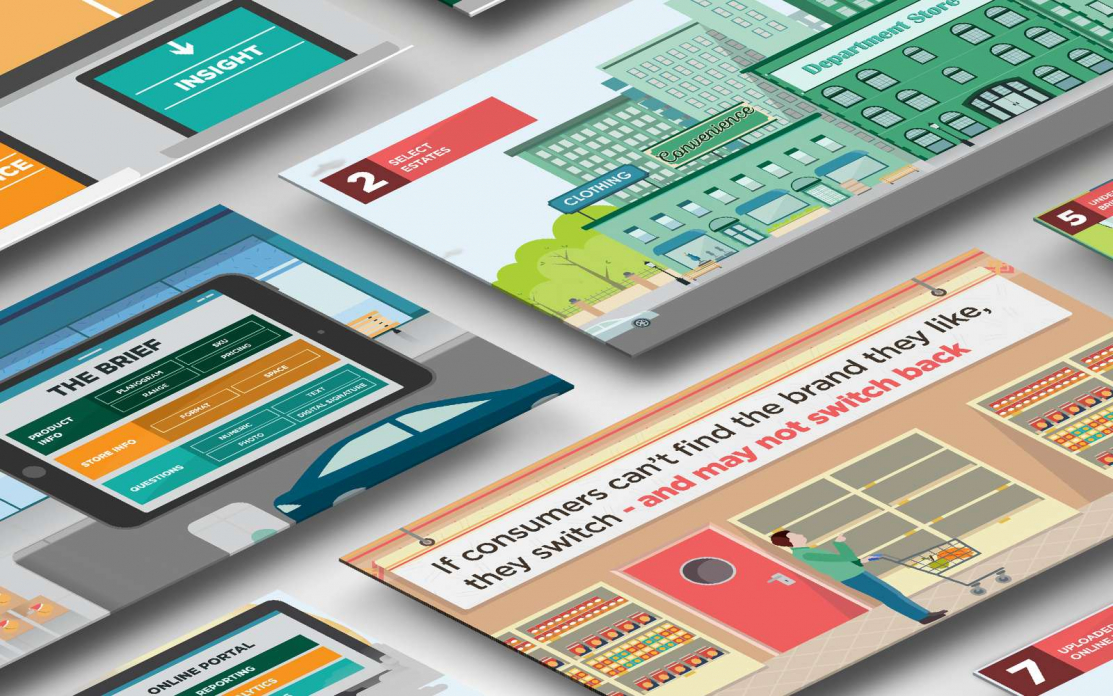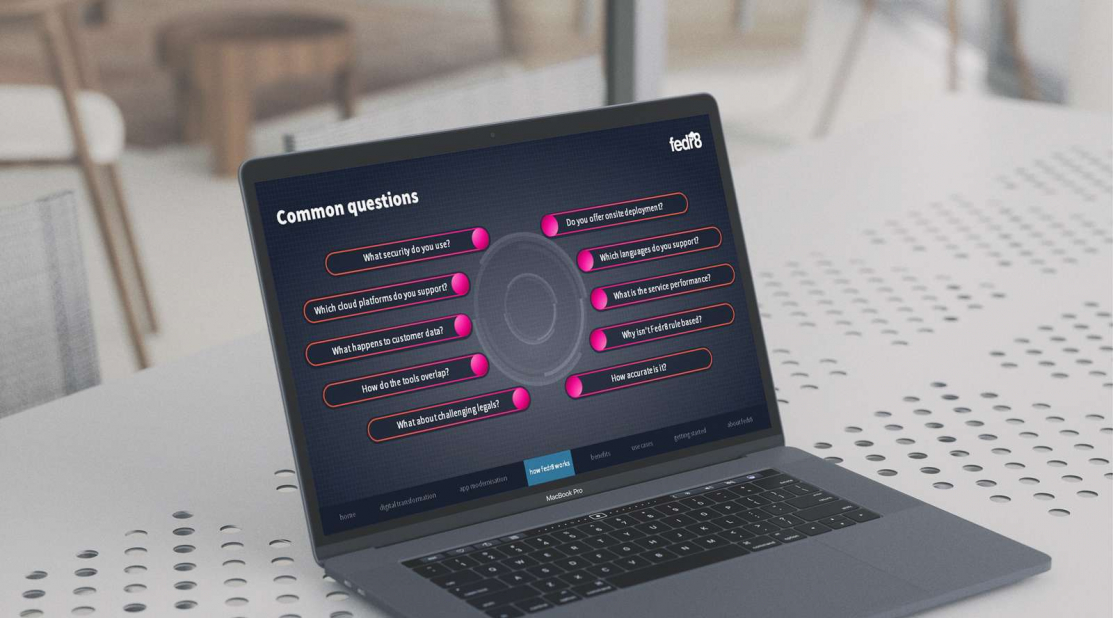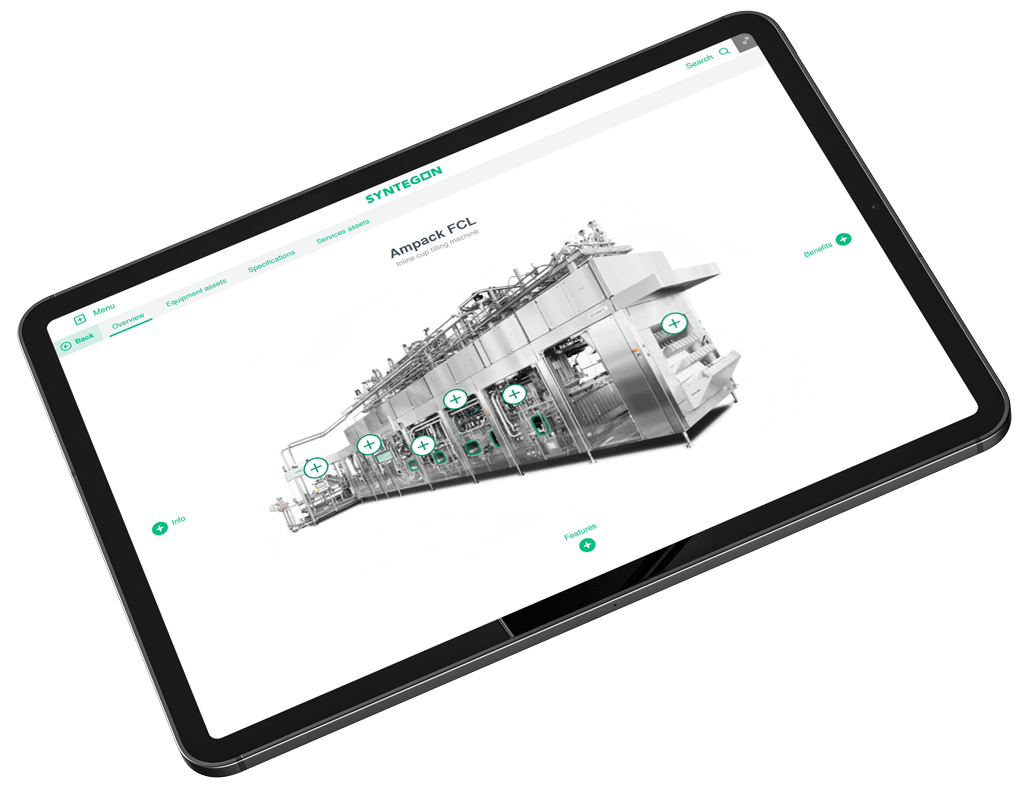Thinking about developing an interactive presentation, but need to know more about the basics first?
Well, firstly – what do we mean by an ‘interactive presentation’? Also known as ‘conversational presenting‘, it is a presentation that lets you freely navigate around the slides and content, so it isn’t linear – meaning you don’t need to click through from slide to slide in a fixed order.
You’ll know that the most productive meetings are those where the conversation is frank, open and revolves around the customer and what they and their business are trying to achieve. As well as helping them to clearly articulate their needs and focusing on areas that they maybe hadn’t considered, providing a more consultative approach.
Presentations are there to help facilitate these conversations and act as a guide and support, reinforcing your messages.
After all, a conversation is never fixed or rigid; it should be fluid, two-way and quickly cut to the heart of the matter. So a linear presentation just isn’t fit for purpose today, it’s too rigid and inflexible.
This is where interactivity lets you create presentations that are flexible, that can move with the conversation, allowing you to drill into information that is relevant to the audience and drive more productive and effective meetings.
There are a lot of elements to take into account when creating presentations but we’ve highlighted three key presentation rules below that underpin all our work for customers.
1. The purpose of a presentation is to inspire ACTION!

When we ask new customers this question we get a lot of good answers but rarely the right one, first time. The sole purpose of a presentation is to inspire ACTION!
Action in the person or group you are talking with, to do exactly what you need them to do.
It might sound obvious but this takes a little thought and planning which you must do first and, in our experience, very few customers actually do. Your entire presentation needs to be geared to this one purpose.
Why is this so important? Every presentation needs to have a purpose otherwise there is no point having the presentation in the first place. As mentioned, the purpose would be to get your audience to do something, buy a product or solution or adopt a new process. The purpose of the presentation would then be to persuade them to do this action and every element you put into the presentation has to help persuade them to do this. The end of the presentation then needs a clear call to action so your audience knows what to do next – book in another meeting to go over the detail of a deal, book a demo or sign a contract etc.
However, it’s rare that a customer is going to sign a deal after the first meeting there will be certain steps that they will need to go through – their considered buying process. So you need to think more strategically about the actions you need from your presentations, if it’s a first meeting (and they are not going to sign a deal) then you need to work out what the outcome needs to be – if the next step in their buying process is to see a demo then the primary focus of the presentation needs to be moving them to want to book a demo.
So, our advice is to think very carefully about the outcome you need from the presentation and align this with the requirements of your audience and build the presentation around this outcome.
2. Make it relevant

This probably goes without saying, but if your presentation isn’t relevant to your audience, it’s not going to strike the right chord. To make sure you make that connection, you have to build the presentation around your customer with the focus squarely on them and how they’ll benefit, not on how great you are.
It all starts with taking the time to know your customer. What are their business and personal objectives – what are they trying to achieve? Show you understand them and the issues that are stopping them from achieving those objectives and goals.
Building questions into the presentation is a great way to get the customer to open up and personalise the presentation. You’ll be surprised how open people are to talk about their business issues, giving you invaluable insight. But in preparation, it’s also a good idea to do your research and address the trends and challenges that your audience is currently facing in their industry.
A good way of checking if the presentation is relevant is to imagine you’re in your customers’ shoes and asking yourself “So what?” to the key messages in the presentation – if you can’t respond to the “So what?” question then your content isn’t relevant enough, so go back and refine your messaging until it is relevant.
3. Make it memorable and engaging

The aim of any presentation is to make a strong, long-lasting impression. Your audience has to be able to repeat your key messages back to other decision-makers who aren’t in the room, and it also has to be front of mind when they come to making their decision.
Another of the most important presentation rules is to think carefully about the story that you’re going to tell, and ask yourself what messages you want them to remember most. How are you going to construct a narrative that persuades your audience to take the action you need them to take and yet is also easy to remember and retell? Read our blog on constructing a narrative.
If you need to explain difficult concepts, visuals are a great way to make an impact and simplify things step-by-step for your audience – so you don’t lose them with endless bullet points and technical jargon.
Don’t forget to create emotional connections, and drive home the single-minded message that you want them to take away.
Advice when developing an interactive presentation

The best advice we can give you is to take your time; it’s all about preparation and planning – not simply diving into PowerPoint and writing all of your content directly onto the slides.
Here’s a breakdown of some of the questions to ask yourself – coupled with some relevant blog posts we think will really help:
- What do I need my audience to do, think or feel after the presentation and how do I make this clear to them?
- Who are you talking to?
- What is the story you’re going to tell them?
- How is your presentation going to be structured? [Why Use a Slidemap and Content Storyboard When Developing Interactive Presentations?]
- How can you visualise it? [Why Visual Storytelling is Essential for Your Interactive Presentation]
Our client, Fedr8, needed to create a very compelling presentation that ensured people fully understood their solution. They came to us, and we held a workshop where we talked through everything from their audience, to their solution, which helped us to better understand all the key points and how they tie together.
The result was an interactive presentation which was entirely built around the audience, with visuals to help explain key messages and complex processes. Because we were able to follow all of the key points above, Fedr8 were left with something that was memorable, relevant and engaging – whilst hitting the right mark with their customers.
Presentation rules in summary
Remember, when developing an interactive presentation, it’s all about the audience. Don’t stuff the slides with product-focused content – instead, make it customer-centric and ensure that your presentation is:
- Memorable
- Relevant
- Engaging
If you follow these three rules, you won’t go far wrong – leaving you with an invaluable sales tool that will help you start meaningful conversations and establish a better connection with your audience.
Put the presentation rules into practice
Do you have any other questions about where to start when developing an interactive presentation? The experts at POP are here to help. As interactive presentation specialists, we can help you create a presentation that speaks to and engages your audience.
To find out more or get the ball rolling, email us on hello@popcomms.com or call +44 (0)117 329 1712.
Related Posts

Why You Shouldn’t Rule Out PowerPoint for Your Next Interactive Presentation
Read

What Are the Options for Creating Persuasive Presentations?
Read

How Long Does It Take To Develop Interactive Sales Experiences?
Read

Case Study: How POP Creates Interactive Presentations Your Entire Team Can Use
Read